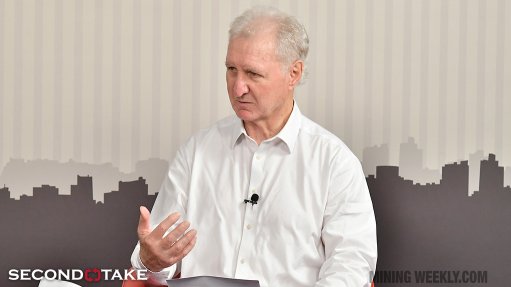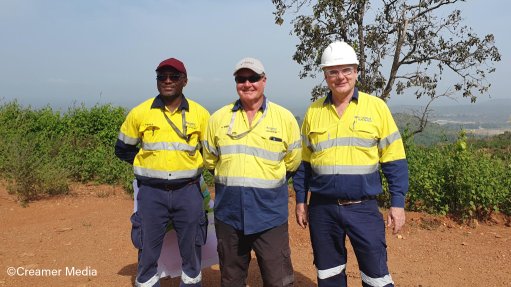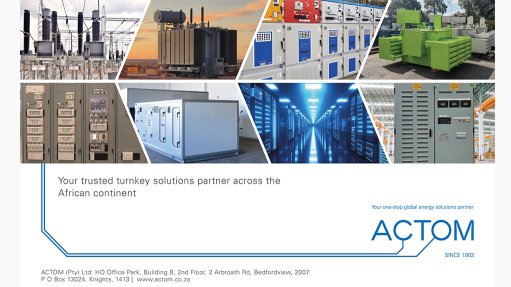Energy expert writes to government calling for overhaul of RMIPPPP ahead of July financial close
An energy expert has written to the Department of Public Works and Infrastructure (DPWI) and the Independent Power Producer (IPP) Office to highlight the expensive shortcomings of the Risk Mitigation Independent Power Producer Procurement Programme (RMIPPPP), which he says should be replaced by a materially larger, yet more cost-effective, procurement programme based primarily on renewables and storage, rather than power ships.
DPWI, together with The Presidency, is overseeing the implementation of the Strategic Infrastructure Projects, or SIPS, earmarked for priority implementation as part of government’s economic recovery from the Covid-19 pandemic. The RMIPPPP is one of the 62 initial SIPS Gazetted in line with the Infrastructure Development Act.
On March 18, Mineral Resources and Energy Minister Gwede Mantashe named eight preferred bidders under the 20-year RMIPPPP, including three fully imported Karpowership floating gas-fired power plants, which collectively secured 1 220 MW of the 2 000 MW on offer.
Besides the power ships, the other projects named as preferred bidders, and making up the 1 850 MW to be contracted under the scheme, included various combinations of solar photovoltaic (PV), wind and gas or diesel generators, along with battery storage systems.
The preferred bidders are required to reach financial close by no later than the end of July 2021.
All projects had to meet a standalone 05:00 in the morning to 21:30 at night dispatch-load stipulation, without accessing any other existing infrastructure.
Energy consultant Clyde Mallinson, who has written the letter to the IPP Office, warned in October, and ahead of the December RMIPPPP bid deadline, that the rules treating each project as separate generation “islands” were heavily skewed in favour of gas-to-power solutions and would result in extremely costly bids.
He said the standalone architecture, which made it impossible for projects to tap into existing grid infrastructure to help reduce the cost of production, should be overhauled to avoid an outcome that would lock in “dirty and expensive energy for the next 20 years”.
Mallinson also question why government was targeting to procure only 2 000 MW in a context where the true deficit was far larger. It has been estimated at 5 000 MW by Eskom.
In the event, the rules were not adjusted, and the tariffs bid by the preferred bidders range from a low R1 468/MWh to R1 885/MWh.
In his briefing note sent to the IPP Office, Mallinson argues that a “systems” response that deploys all the country’s existing electricity assets would be a far cheaper way to respond to the electricity emergency than the RMIPPPP.
Such an approach would allow new projects to interact with the country’s existing generation, storage, transmission, and distribution infrastructure to unlock “complementary or mutually beneficial interaction”.
“This full systems approach allows for 30 TWh per annum (or more) to be procured at an estimated tariff of R0.61/kWh, or 39% of the weighted average tariff (R1.58/kWh) of the winning bids in the RMIPPPP.
“Importantly, 10 TWh of the 30 TWh, or the equivalent of the output of the RMIPPPP, will meet all of the requirements of the RMIPPPP, and guaranteed dispatchable supply of 2 000 MW from 05h00 to 21h30 will be available, each and every day of the year,” the note reads.
Achieving such an outcome would involve the IPP Office immediately procuring, or enabling the commercial procurement of, 5 GW of solar PV, 3 GW of wind and 2 GW/4 GWh of storage.
“For a commitment of an additional 15% of National Treasury-backed power purchase agreements (PPAs), Eskom will be able to procure three times as much electricity, at 39% of the cost/kWh, as compared to the RMIPPPP,” Mallinson writes.
In addition, he calculates a fourfold increase in infrastructure spend and a tenfold increase in job creation, aligned with government’s aim of using infrastructure to reignite economic growth, which slumped 7% last year because of the Covid-19 pandemic.
“The estimated local infrastructure spend of the alternative 30 TWh systems approach is about R95-billion.”
It would also eliminate fuel-price-volatility risk assumed under the RMIPPPP, owing to gas being treated as a pass-through cost.
“The estimated cost of supplying gas to the projects that use gas, including the power ships, over the 20-year term of the PPAs, exceeds R150-billion in 2021 rand terms, assuming constant gas prices over the period.”
Article Enquiry
Email Article
Save Article
Feedback
To advertise email advertising@creamermedia.co.za or click here
Announcements
What's On
Subscribe to improve your user experience...
Option 1 (equivalent of R125 a month):
Receive a weekly copy of Creamer Media's Engineering News & Mining Weekly magazine
(print copy for those in South Africa and e-magazine for those outside of South Africa)
Receive daily email newsletters
Access to full search results
Access archive of magazine back copies
Access to Projects in Progress
Access to ONE Research Report of your choice in PDF format
Option 2 (equivalent of R375 a month):
All benefits from Option 1
PLUS
Access to Creamer Media's Research Channel Africa for ALL Research Reports, in PDF format, on various industrial and mining sectors
including Electricity; Water; Energy Transition; Hydrogen; Roads, Rail and Ports; Coal; Gold; Platinum; Battery Metals; etc.
Already a subscriber?
Forgotten your password?
Receive weekly copy of Creamer Media's Engineering News & Mining Weekly magazine (print copy for those in South Africa and e-magazine for those outside of South Africa)
➕
Recieve daily email newsletters
➕
Access to full search results
➕
Access archive of magazine back copies
➕
Access to Projects in Progress
➕
Access to ONE Research Report of your choice in PDF format
RESEARCH CHANNEL AFRICA
R4500 (equivalent of R375 a month)
SUBSCRIBEAll benefits from Option 1
➕
Access to Creamer Media's Research Channel Africa for ALL Research Reports on various industrial and mining sectors, in PDF format, including on:
Electricity
➕
Water
➕
Energy Transition
➕
Hydrogen
➕
Roads, Rail and Ports
➕
Coal
➕
Gold
➕
Platinum
➕
Battery Metals
➕
etc.
Receive all benefits from Option 1 or Option 2 delivered to numerous people at your company
➕
Multiple User names and Passwords for simultaneous log-ins
➕
Intranet integration access to all in your organisation





















